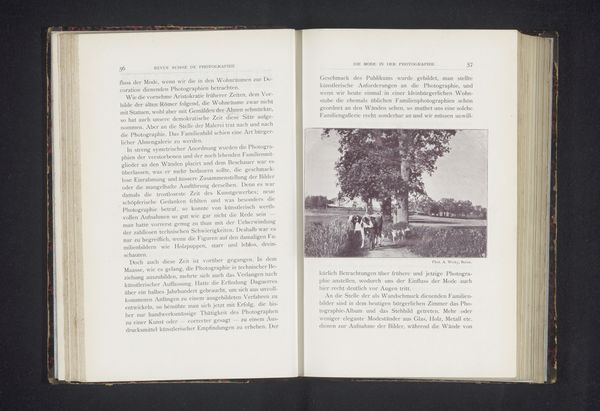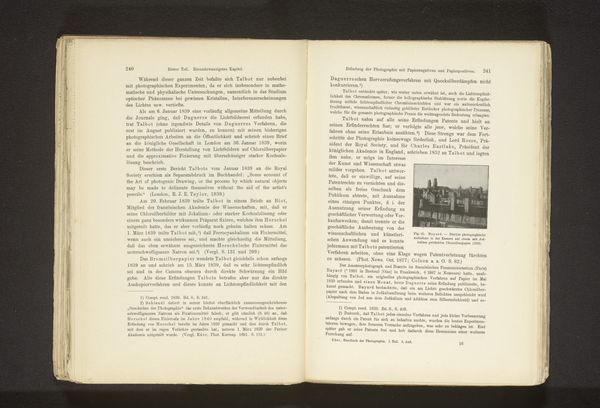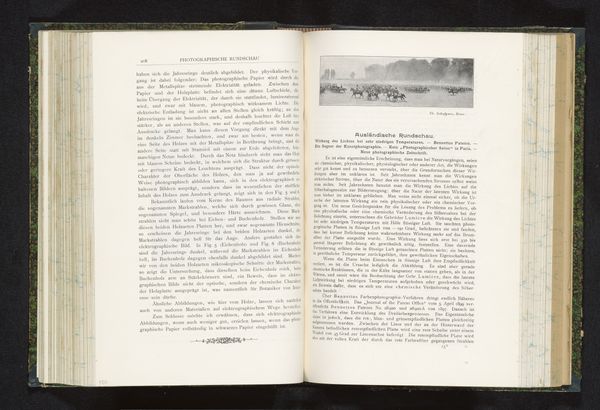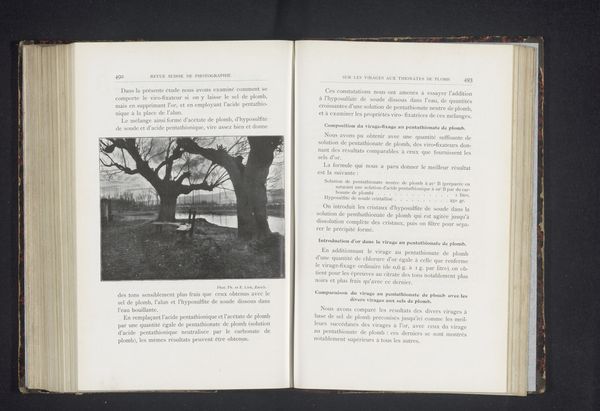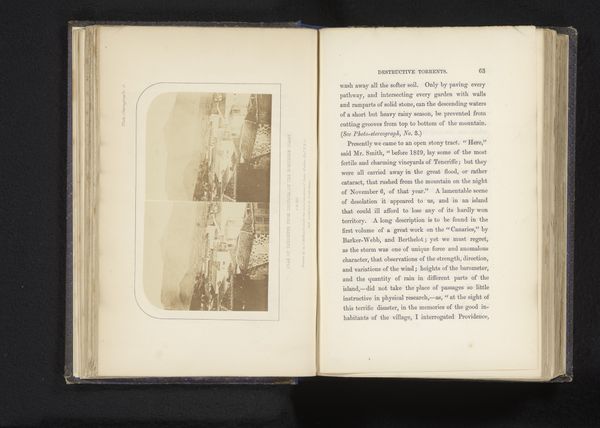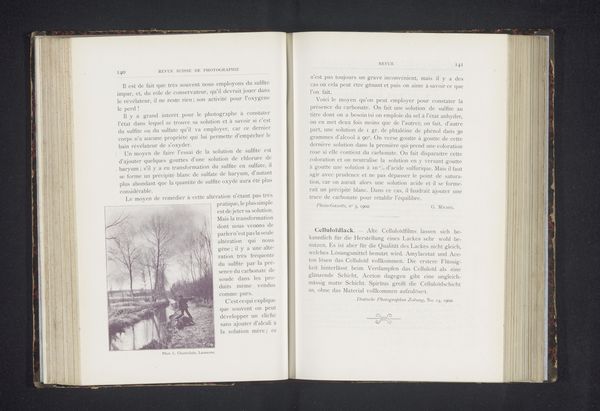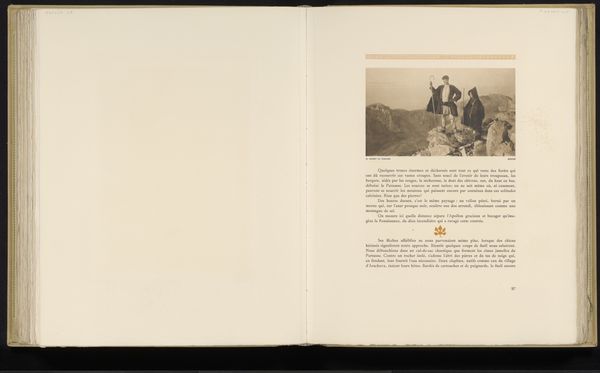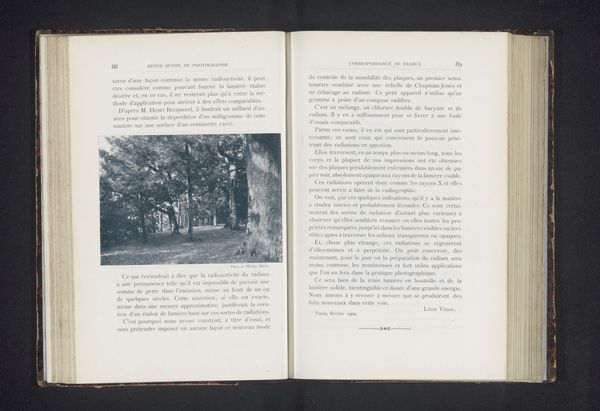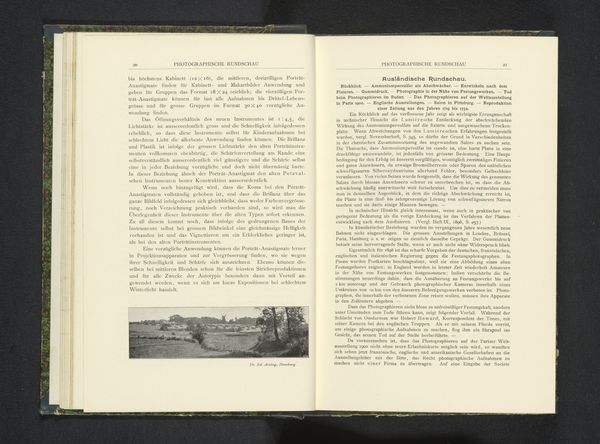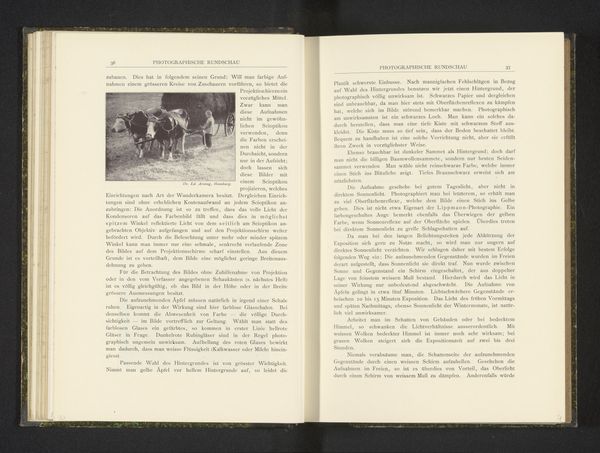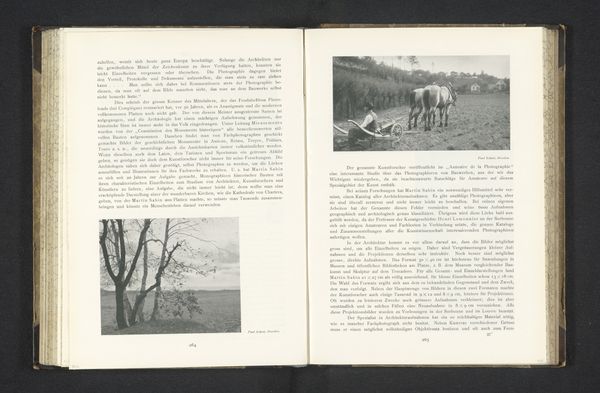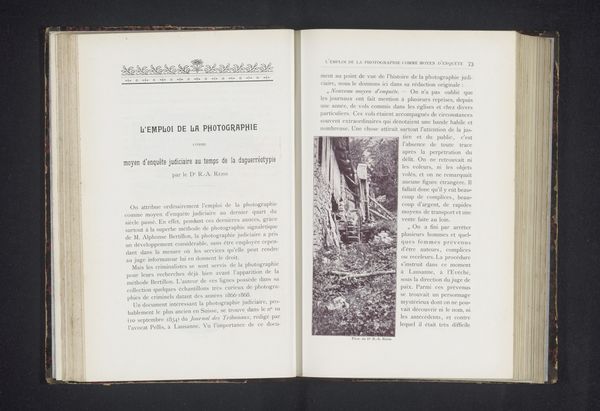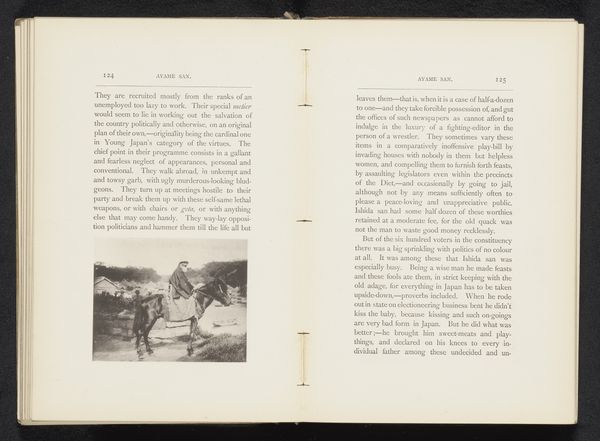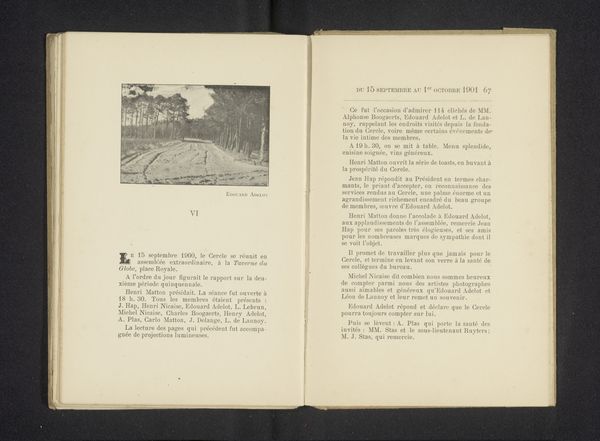
print, photography
# print
#
landscape
#
photography
Dimensions: height 64 mm, width 118 mm
Copyright: Rijks Museum: Open Domain
Curator: This image presents a glimpse into agricultural life before 1902. Entitled "Boeren oogsten het land," it is believed to be a photographic print by L. Chastellain. Editor: The image is rather still and serene, isn't it? Even with figures and animals, there's an overwhelming stillness. It's also remarkably sepia and monochrome. It seems to capture a specific light; could that reflect a romantic idea about country labor? Curator: The choice to depict harvesting suggests a conscious engagement with familiar allegories around labor and man’s relation to the earth. Consider how agrarian scenes are often used to define cultural identity. This photograph likely taps into late 19th-century social narratives. Editor: I wonder about the symbols present. Oxen signify labour, toil, steadfastness—even servitude. Placed here, these animals carry significant symbolic weight, grounding the work in tradition and hinting at the endurance required for rural existence. The photograph appears staged though, so where does that position us culturally? Curator: Right. We have to examine the socio-economic realities of the farmers shown. Consider if Chastellain is exoticizing or even romanticizing rural life for an urban audience largely detached from agriculture and the political strife inherent in farming practices? Is the idyllic visual betraying class and regional bias? Editor: Ultimately, regardless of what the picture tells us of societal dynamics at the time, one enduring symbol it offers us is continuity—the visual reminders of seasonal returns and agricultural legacy. We see that represented in the ox and workers—perhaps to assure stability as rapid changes arrived in the larger, more metropolitan cities. Curator: I agree. The piece evokes deep connections to historical circumstances while prompting essential questions about representation. It bridges the space between social critique and collective cultural memory. Editor: Indeed, these reflections can lead us to think critically about agriculture, landscape, the camera, and how societies constantly construct new images that connect them to the past.
Comments
No comments
Be the first to comment and join the conversation on the ultimate creative platform.
